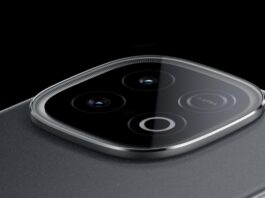Vivo hosted the Vivo Video Festival in China on July 30. Vivo announced the Vivo V3, its latest self-developed imaging chip, along with new Zeiss T coating technology as part of this event.
Compared to its predecessor, Vivo’s V3 is 30 percent more energy efficient thanks to its 6nm process technology. New multi-concurrent AI perception-ISP architectures and second-generation FIT interconnection systems enable these improvements, thereby reducing power consumption and enhancing algorithm performance.
Additionally, the Vivo V3 allows for seamless integration with the phone’s SoC and significantly reduces image processing time. Using the V3 imaging chip, you can capture and edit 4K movie portrait videos with advanced color processing, bokeh blur, and skin quality enhancement. A cinematic effect can also be achieved with post-shooting editing, and blur and focus positions can be adjusted.
Collaboration between Vivo and Zeiss led to the introduction of the new Zeiss T* coating technology. The upcoming flagship model of the X-series will use this technology, combined with Multi-ALD (Atomic Layer Deposition), to significantly improve image quality. To enhance zoom performance, a new “Vario-Apo-Sonnar” standard telephoto lens has been launched.
Aside from hardware advancements, Vivo is optimizing algorithms to enhance portrait and night scene photography, ensuring a better user experience. Furthermore, the AIGC future portrait laboratory is exploring future imaging technologies, such as 3D portrait reconstruction.
As of now, Vivo has not announced which mobile phone will debut with the V3 imaging chip, but it appears to be one of the next-generation X series flagships. The Vivo X100 Pro and X100 Pro+ are likely to support it.





